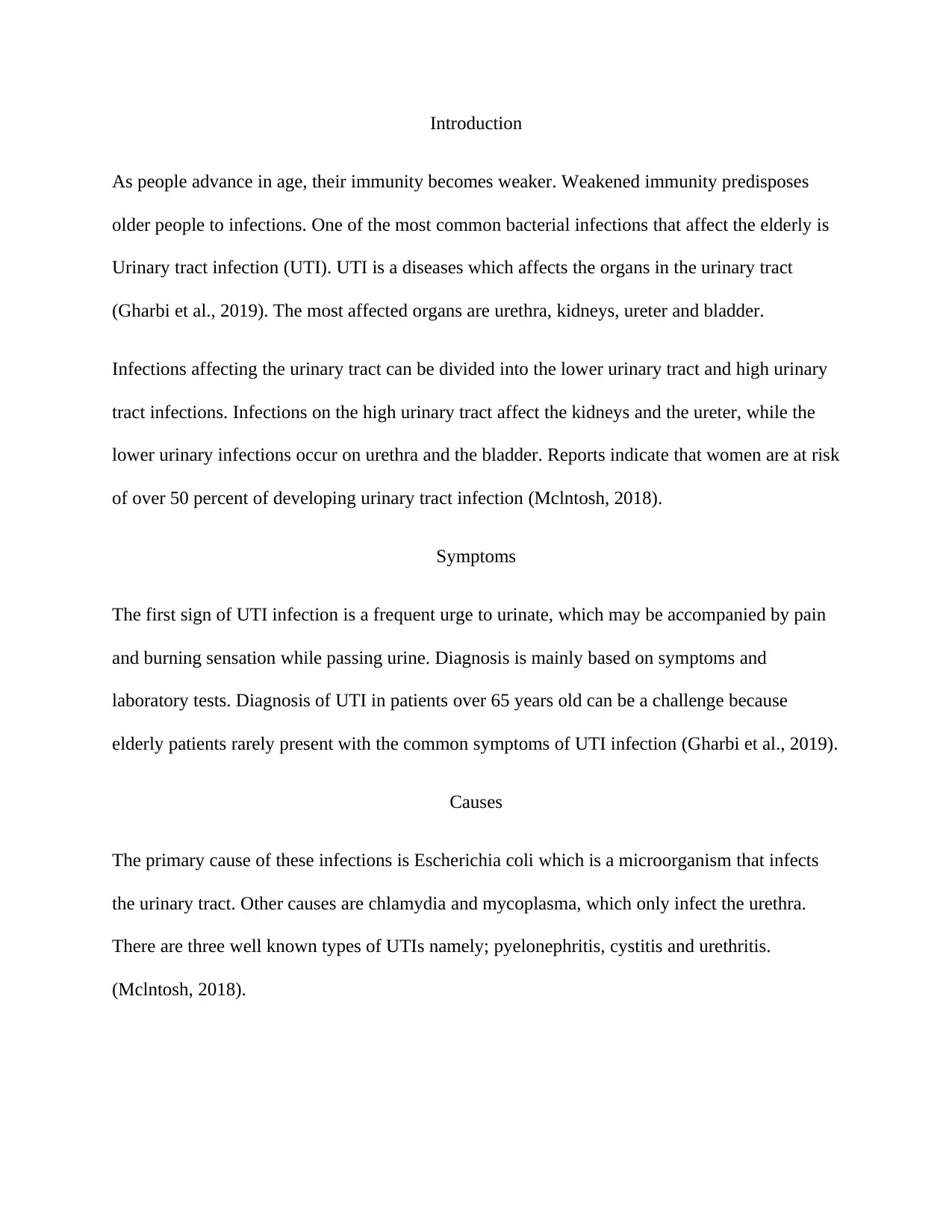Urinary Tract Infections: A Study of Causes, Symptoms, and Treatments
VerifiedAdded on 2022/10/06
|2
|309
|49
Report
AI Summary
This report provides an overview of Urinary Tract Infections (UTIs), focusing on their impact on the elderly population. It begins by defining UTIs and highlighting their prevalence, particularly among women and the elderly. The report then details the common symptoms, such as frequent urination and burning sensations, while acknowledging the challenges in diagnosis among the elderly. It explores the primary causes, including Escherichia coli and other microorganisms like chlamydia and mycoplasma, and differentiates between the types of UTIs, such as pyelonephritis, cystitis, and urethritis. Finally, the report concludes by emphasizing the importance of hygiene and adequate water intake in preventing UTIs, while also mentioning the use of antibiotics for treatment.
1 out of 2








![[object Object]](/_next/static/media/star-bottom.7253800d.svg)